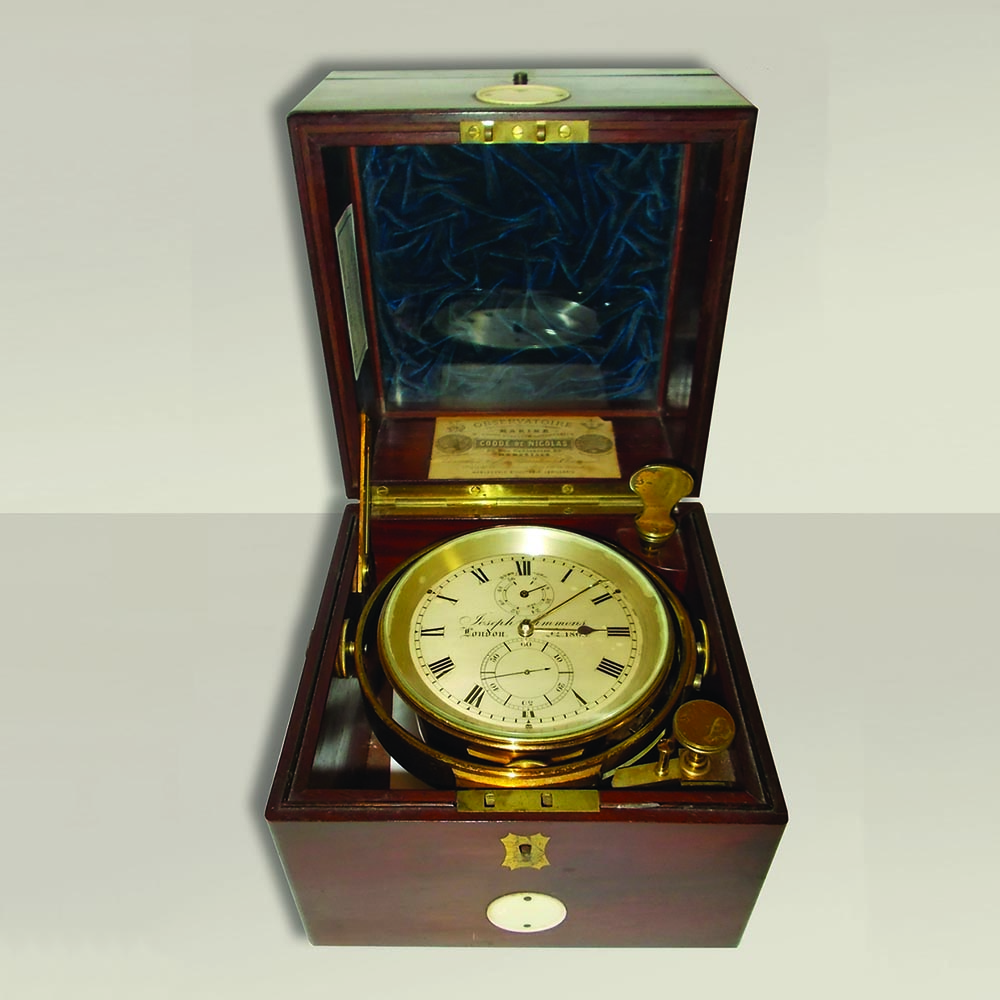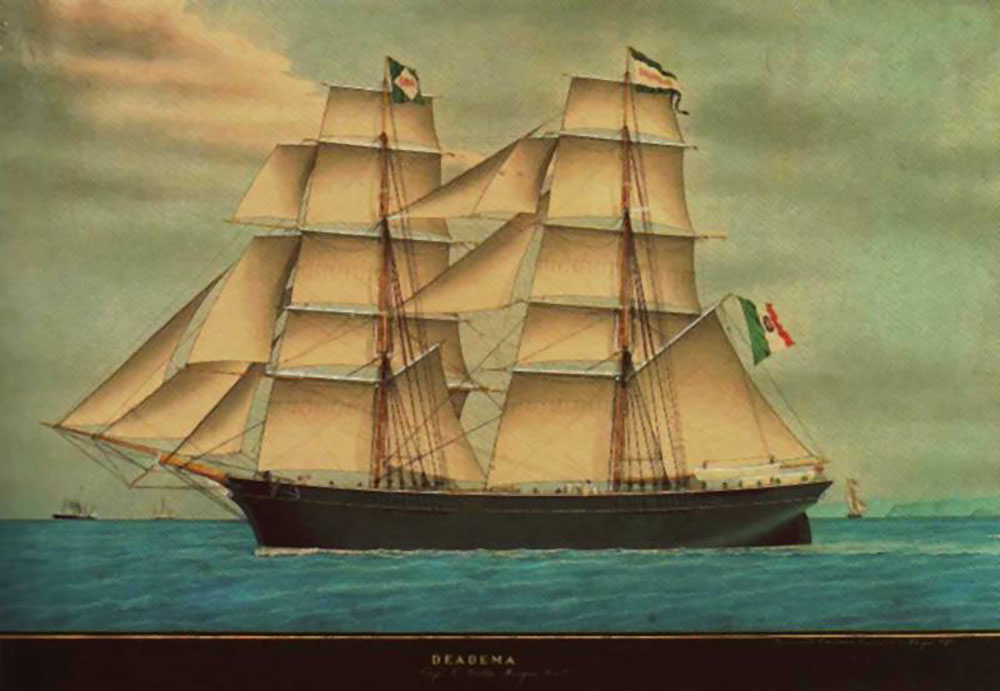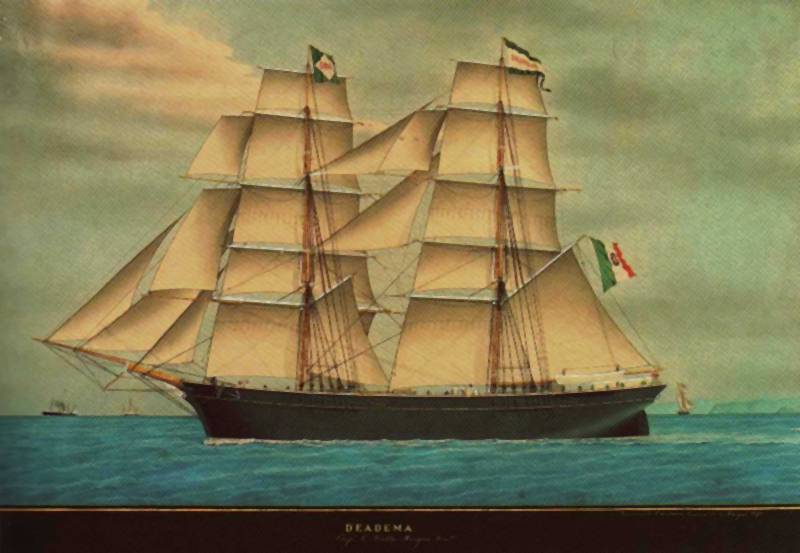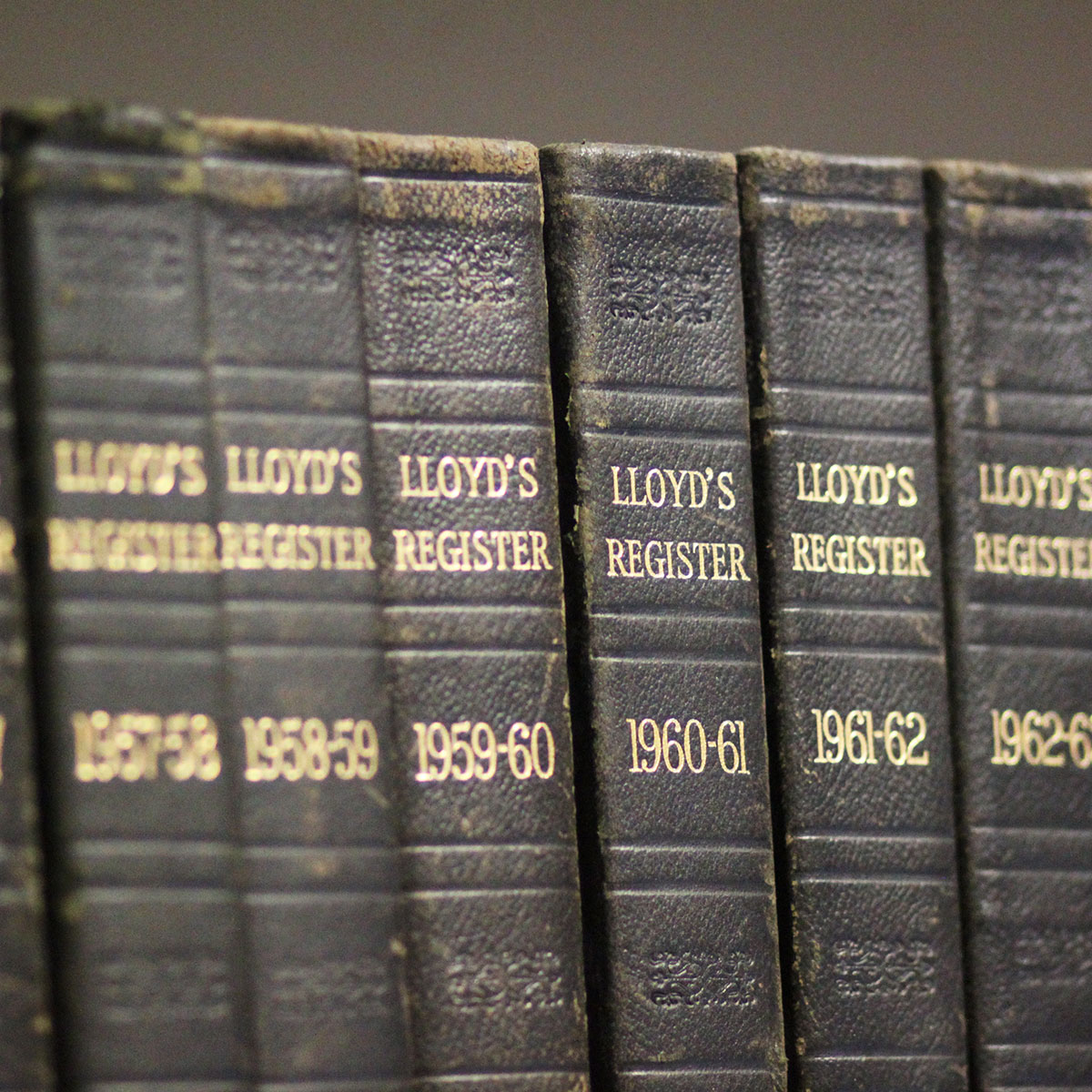A thousand white sails
THE MODELS
The Maritime Museum of Camogli holds 146 models of vessels, built almost exclusively by the seafaring people of Camogli.
Among these, the model of the “Mou” ex “Firmamento”, built in oak in Lavagna in 1875 in the G. Brignole shipyard, 944 tons, 54 meters long, is of considerable importance.
The model built by its ship owner Luigi Bozzo in a warehouse in Piazza Colombo in Camogli, with the same attributes as the real brigantine pole, was set up as on the slipway; starting from the keel, then arranging the frame floors, the keelsons, the ribs, the beams and all the infinite details that make up the vessel.
It is still remembered today, over a hundred years later, that the whole district participated in the construction work directed by the old shipowner and carried out by a good shipwright.
The size of the model is remarkable: 2.58 meters long and 1.75 tall.
Also part of the collection of models are the ships in bottles, the result of a skilful and ingenious work of old boatswaines and sailors who managed, with their big fingers used for less polite works, to perform real miracles.
THE NAUTICAL INSTRUMENTS
The Maritime Museum of Camogli boasts a collection of navigation tools used onboard, which belonged to captains and officers. Each tool is labeled with the name of the owner and donor.
Browsing through the display cabinets we find:
- Five torricellian mercury barometers
- Twelve magnetic compasses, among the oldest instruments used for navigation, with the guideline indicating the bow of the ship
- Eight galilean telescopes to scan the horizon at a great distanceFive ancient chronometers to calculate the longitude of the ship even in the open sea
- Two Martilogi or Renard, forerunners of the easy-to-read route recorders, necessary when illiteracy on board was widespread
- Two artificial horizons to observe the sun even in the presence of poor visibility
- Twenty-seven octants, instruments built on the principle of double reflection.
- The octant allowed precise observations of the height of the stars. The captains, who considered it an “iron of the trade”, almost always bought it in England and kept it carefully in their own box, because it allowed them to calculate the position of the ship when they were in the open sea, with no coast in sight.
- Twenty five sextants. This instrument, based on the same principle as the octant, but with a greater amplitude, can measure an angle of 120 °. Over time it replaced the octant, especially when the use of the micrometric screw facilitated and speeded up reading.


THE NAUTICAL INSTRUMENTS
The Maritime Museum of Camogli boasts a collection of navigation tools used onboard, which belonged to captains and officers. Each tool is labeled with the name of the owner and donor.
Browsing through the display cabinets we find:
- Five torricellian mercury barometers
- Twelve magnetic compasses, among the oldest instruments used for navigation, with the guideline indicating the bow of the ship
- Eight galilean telescopes to scan the horizon at a great distanceFive ancient chronometers to calculate the longitude of the ship even in the open sea
- Two Martilogi or Renard, forerunners of the easy-to-read route recorders, necessary when illiteracy on board was widespread
- Two artificial horizons to observe the sun even in the presence of poor visibility
- Twenty-seven octants, instruments built on the principle of double reflection.
- The octant allowed precise observations of the height of the stars. The captains, who considered it an “iron of the trade”, almost always bought it in England and kept it carefully in their own box, because it allowed them to calculate the position of the ship when they were in the open sea, with no coast in sight.
- Twenty five sextants. This instrument, based on the same principle as the octant, but with a greater amplitude, can measure an angle of 120 °. Over time it replaced the octant, especially when the use of the micrometric screw facilitated and speeded up reading.
THE NAUTICAL VOLUMES
A real hidden treasure in the Maritime Museum of Camogli are its nautical volumes.
Of particular importance is the collection of Lloyd’s Register of Ships from 1902 to 1978, which report the technical data of all the ships in the world existing in the reference year. A real goldmine for scholars.
Just as interesting is the collection of volumes of the Italian Naval Register from 1861 to 1980, with reference to the national shipping from the year of the Unification of Italy.
Everything is free to consult, both for lovers of marine topics and for students, looking for information for their university theses.
The oldest volume in the collection is “Trattato dell’uso et della fabbrica dell’astrolabio” by F. Egnatio Danti dell’Or. of S. Domenico, published by A. Giunti in 1564 (MDLXIIII).
THE PAINTING COLLECTION
The Museum also features an art gallery. Among the paintings, the sailboats of the navy of Camogli stand out, painted by an artist from what we called the “Pierhead Painters” or “Sea Painter”, a group of artists from different nationalities active in multiple harbors around the world.
The main painting technique is tempera mixed with the use of watercolor, ink and pencil; some artists have used embroidery and the use of silk to render the three-dimensional effect of the unfurled sails.
The most renowed painter is Domenico Gavarone, trusted painter of the Camogliesi Amateurs. The Commander Pro Schiaffino, Director of the Museum for over 32 years, ensures that all the sailing maneuvers depicted in his paintings are accurate representations.


THE PAINTING COLLECTION
The Museum also features an art gallery. Among the paintings, the sailboats of the navy of Camogli stand out, painted by an artist from what we called the “Pierhead Painters” or “Sea Painter”, a group of artists from different nationalities active in multiple harbors around the world.
The main painting technique is tempera mixed with the use of watercolor, ink and pencil; some artists have used embroidery and the use of silk to render the three-dimensional effect of the unfurled sails.
The most renowed painter is Domenico Gavarone, trusted painter of the Camogliesi Amateurs. The Commander Pro Schiaffino, Director of the Museum for over 32 years, ensures that all the sailing maneuvers depicted in his paintings are accurate representations.
Sanctuary N.S. of the Boschetto
Visit also the gallery of the Ex voto of the Sanctuary N.S. of the Boschetto


